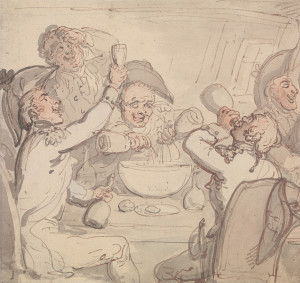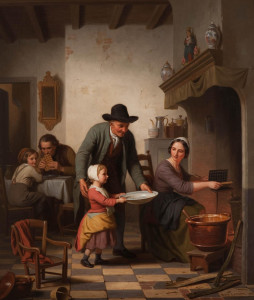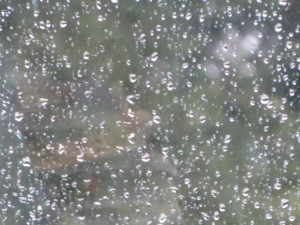When we think of egg nog, we think of Christmas. But David Wondrich, in the updated and revised edition of his book Imbibe!, tells us that this very American drink has a long history beyond that seasonal limitation. The rich concoction of eggs beaten to a froth with sugar and added to milk and spirits and flavored with freshly-ground nutmeg was first mentioned in a Philadelphia newspaper in 1788. Certainly folks were drinking it well ahead of its debut newspaper mention, and back then it was not just a Yuletide beverage.
In his book, Wondrich relates the tale of what may be the most famous appearance of egg nog outside of Christmas: It was on this day, San Jacinto’s Day, in 1843. The story involves Texas and about 160 soldiers of the Army of the Texas Republic who were being held as prisoners of war by the Mexican general Santa Ana. The Texian prisoners were successful in bribing their Mexican captors into smuggling in all the necessary fixings for egg nog… though the milk came from a donkey, not a cow, and the spirits were not rum or whisky or brandy but mezcal. This is Mexico, after all, 1843. Then, as now, the best of us work with what we’ve got.
Texian General Thomas Green recollected two years later that, thanks to their Mexican collaborators, they were able to get their hands on “seven gallons of vino mascal, and as many of ass’s milk, thirty dozen eggs, [and] a large loaf of sugar.” Add to that list an assortment of accoutrements smuggled in from the kitchen. The Texians made the egg nog in celebration of the anniversary of the Battle of San Jacinto, which took place on San Jacinto’s Day, April 21, 1836. It was the decisive 18-minute battle that won independence from Mexico for the Republic of Texas. Still today it is a state holiday in Texas, though I doubt anyone is making egg nog to celebrate. Especially to the tune of seven gallons of mezcal.
I, for one, would be all for more egg nog days in our year.
Image: “Naval Officers and a Bowl of Punch” by Thomas Rowlandson. Watercolor, graphite and ink on paper, undated. Yale Center for British Art. [Public domain] via Wikimedia Commons.


